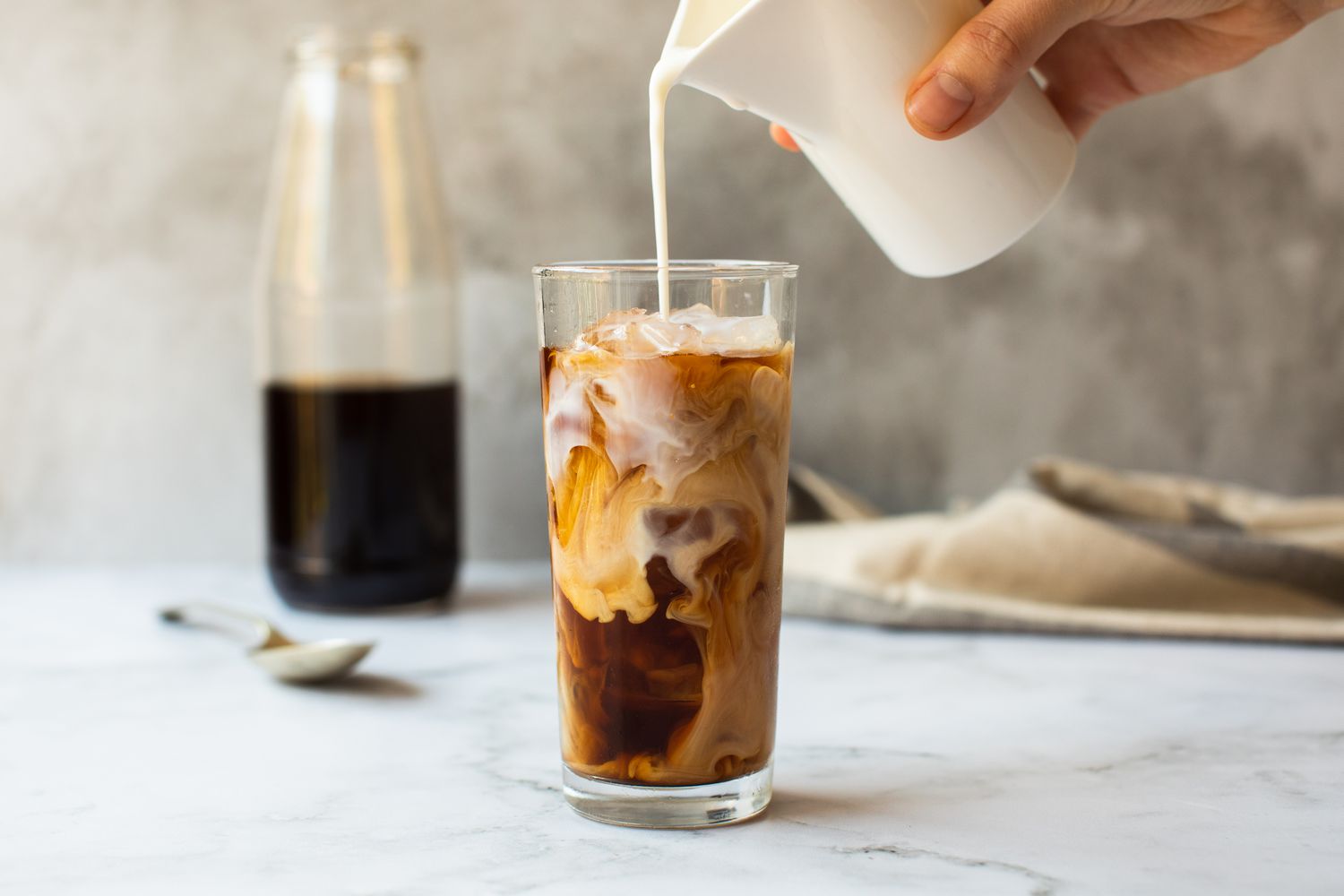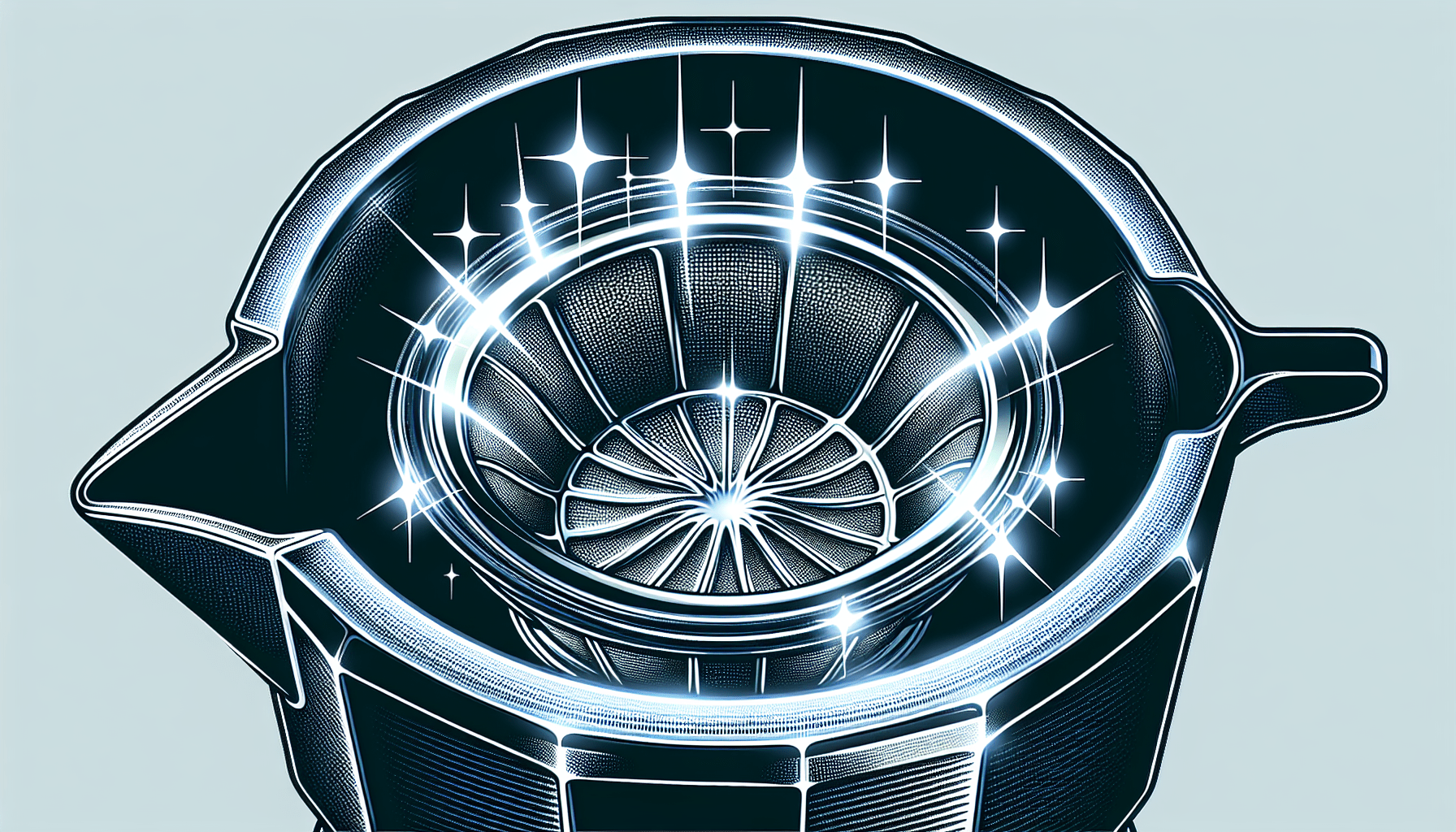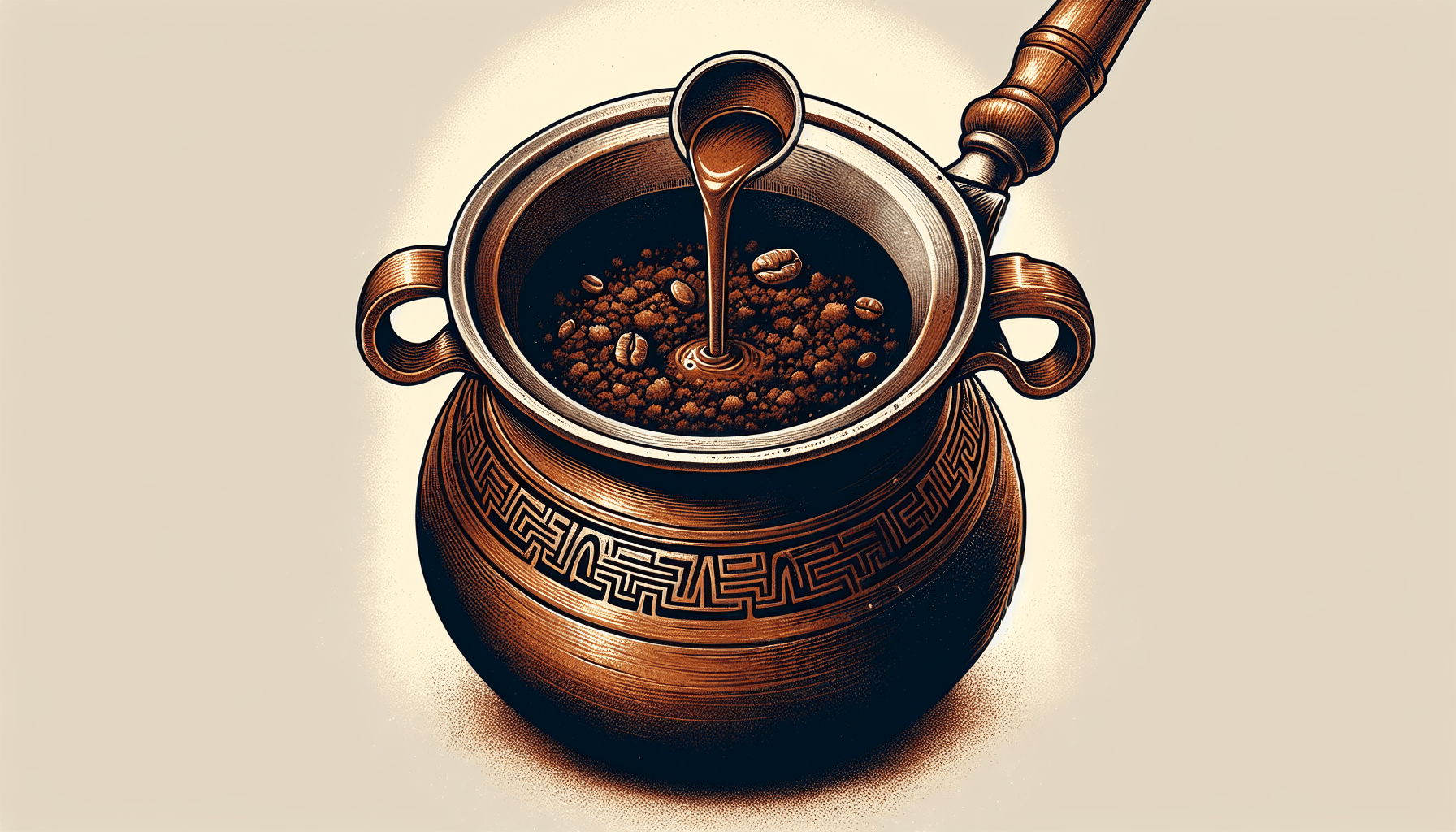If you’re a coffee lover looking to experiment with different brewing methods, you might find yourself wondering if a stovetop espresso maker can double as a cold brew maker. After all, both methods serve up delicious caffeinated concoctions, but can they truly be interchangeable? In this article, we’ll explore whether your trusty stovetop espresso maker can be repurposed to create the smooth and refreshing cold brew you’re craving. Get ready to discover if your favorite brewer can adapt to your summer coffee cravings.
What is a stovetop espresso maker?
A stovetop espresso maker, also known as a moka pot, is a classic and popular device for brewing strong and flavorful coffee on the stove. It is often made of aluminum or stainless steel and consists of three main parts: a bottom chamber for water, a middle chamber for the coffee grounds, and a top chamber for the brewed espresso.
Description of a stovetop espresso maker
A stovetop espresso maker typically has a narrow neck and a small spout, which helps to concentrate the flavors during the brewing process. It usually comes in different sizes, ranging from one cup to twelve cups, depending on your brewing needs. The bottom chamber is filled with water, while the middle chamber holds the coffee grounds. Heat from the stove causes pressure to build up, forcing hot water through the coffee grounds and into the top chamber, creating a strong espresso-like coffee.
How it works
Using a stovetop espresso maker is relatively simple. First, unscrew the top and remove the filter basket. Then, fill the bottom chamber with hot water up to the designated level or just below the pressure valve. Next, fill the filter basket with finely ground coffee, ensuring it is evenly distributed and not packed too tightly. Screw the top back on and place the espresso maker on the stove over medium heat. The water will heat up, creating pressure that forces the hot water up through the coffee grounds, resulting in a rich and flavorful espresso-like coffee.
Common brands and models
There are several popular brands and models of stovetop espresso makers available on the market. Bialetti is one of the most well-known and trusted brands, with their Moka Express being a classic and widely used model. Alessi and Cuisinox also offer high-quality stovetop espresso makers, known for their durability and performance. It’s essential to read reviews and consider factors such as material, size, and ease of use when choosing a stovetop espresso maker that best suits your preferences.
What is cold brew?
Cold brew coffee has gained popularity in recent years for its smooth and less acidic flavor profile. Unlike traditional hot brewed coffee, cold brew is made by steeping coffee grounds in cold or room temperature water for an extended period, usually between 12 to 24 hours.
Explanation of cold brew coffee
Cold brew coffee is known for its rich and mellow taste, which is achieved through the long steeping process. The slow extraction of flavors creates a smoother and less bitter coffee compared to hot brewed coffee. The cold water encourages the extraction of different compounds, resulting in a unique flavor profile that highlights the coffee’s sweetness, chocolatey notes, and subtle acidity.
How it is different from regularly brewed coffee
Cold brew coffee differs from regularly brewed coffee in a few key ways. Firstly, the brewing temperature is much lower, typically around 40 to 60 degrees Fahrenheit (4 to 15 degrees Celsius), as opposed to the high temperatures used for hot brewing methods. Secondly, the brewing time is significantly longer, taking hours instead of minutes. These differences in temperature and time create a different chemical extraction process, resulting in a distinctive flavor profile.
Benefits of cold brew
Cold brew coffee offers several advantages that make it appealing to coffee enthusiasts. One of the main benefits is its lower acidity, which makes it easier on the stomach and teeth compared to hot brewed coffee. The slower extraction process also reduces the extraction of certain bitter compounds, resulting in a smoother and less bitter taste. Additionally, cold brew coffee can be enjoyed both hot and cold, making it a versatile option for various coffee preparations and preferences.
Can a stovetop espresso maker make cold brew?
While a stovetop espresso maker is a great tool for brewing strong espresso-like coffee, it is not ideal for making cold brew coffee. There are several reasons why a stovetop espresso maker is not suitable for cold brewing.
Understanding the limitations of a stovetop espresso maker
The design and functionality of a stovetop espresso maker are optimized for brewing concentrated and strong espresso-like coffee. The pressure created during the brewing process is necessary to extract the flavors from the coffee grounds effectively. However, cold brew coffee relies on a slow and gentle extraction process, which does not require pressure. The intense pressure produced by a stovetop espresso maker would result in over-extraction and potentially bitter and unpleasant flavors in cold brew.
Differences in the brewing methods of espresso and cold brew
The brewing methods for espresso and cold brew are fundamentally different. Espresso is made by forcing hot water through finely ground coffee under pressure, resulting in a concentrated and intense coffee flavor. Cold brew, on the other hand, involves steeping coarse coffee grounds in cold or room temperature water for an extended period, allowing the flavors to slowly infuse into the liquid. These distinct brewing techniques require different equipment and approaches to achieve optimal results.
Why stovetop espresso makers are not ideal for making cold brew
Stovetop espresso makers, due to their design and functionality, are better suited for producing small volumes of concentrated and strong coffee rather than the larger quantities often desired for cold brew. The pressure created by the stovetop espresso maker could also lead to excessive extraction and potential bitterness in the final cold brew. Additionally, the filter basket in a stovetop espresso maker may not accommodate the coarser coffee grounds needed for cold brew, potentially resulting in clogging and uneven extraction.
Alternative methods for making cold brew
If you are keen on making cold brew at home but don’t have a dedicated cold brew coffee maker, there are alternative methods that can produce delicious cold brew coffee. These methods offer flexibility, allowing you to customize your cold brew experience.
Introduction to other cold brew brewing methods
Some popular alternative methods for making cold brew include using a French press, a mason jar, or a specialized cold brew coffee maker. Each method has its own unique advantages and considerations. For example, a French press is relatively affordable and accessible, while a specialized cold brew coffee maker offers convenience and precise control over the brewing process.
Comparison of different cold brew methods
When comparing different cold brew methods, factors such as brewing time, ease of use, volume capacity, and flavor profile should be taken into consideration. French press and mason jar methods typically require longer steeping times, ranging from 12 to 24 hours, while some specialized cold brew coffee makers offer faster extraction times. Additionally, the choice of coffee grind size and water-to-coffee ratio can also influence the flavor and strength of the cold brew produced.
Benefits and drawbacks of alternative methods
Alternative methods for making cold brew offer various benefits and drawbacks depending on your preferences and needs. French press and mason jar methods, for example, are cost-effective and require minimal equipment, making them ideal for beginners or those on a budget. Specialized cold brew coffee makers, on the other hand, provide convenience and precise control over variables such as steeping time and water flow, but may be more expensive or require additional storage space.
Tips for making cold brew with a stovetop espresso maker
If you are determined to make cold brew using your stovetop espresso maker, there are some modifications and considerations that can help improve your results.
Modifying the stovetop espresso maker technique for cold brew
To adapt a stovetop espresso maker for cold brew, you can start by using a coarser grind size for your coffee. This will help prevent clogging and allow for a more balanced extraction. Additionally, you can adjust the water-to-coffee ratio to achieve your desired strength and flavor. It’s important to remember that cold brew requires a longer brewing time, so be prepared to allow the stovetop espresso maker to steep for several hours or overnight in your refrigerator.
Recommended grind size for cold brew in a stovetop espresso maker
When using a stovetop espresso maker for cold brew, it is recommended to use a coarse grind size. A coarser grind will prevent finer particles from passing through the stovetop espresso maker’s filter basket and clogging the system. This will ensure a smoother extraction and help prevent over-extraction or bitterness in the final cold brew.
Adjusting brewing time and water-to-coffee ratio
Since a stovetop espresso maker is not specifically designed for cold brew, you may need to experiment with the brewing time and water-to-coffee ratio to achieve your preferred cold brew strength and flavor. Start by following the recommended steeping time for cold brew, which is typically between 12 to 24 hours. Adjust the water-to-coffee ratio to your preference, keeping in mind that a higher ratio will result in a milder cold brew, while a lower ratio will yield a stronger and more concentrated brew.
Pros and cons of using a stovetop espresso maker for cold brew
While using a stovetop espresso maker for cold brew is not ideal, there are still some advantages and limitations to consider.
Advantages of using a stovetop espresso maker for cold brew
One advantage of using a stovetop espresso maker for cold brew is that you may already own one, eliminating the need to invest in additional equipment. Additionally, if you prefer a concentrated cold brew or want to experiment with different brewing techniques, a stovetop espresso maker can provide a unique and strong cold brew that may appeal to your taste preferences.
Disadvantages and limitations of using a stovetop espresso maker
One significant limitation of using a stovetop espresso maker for cold brew is the risk of over-extraction and potential bitter flavors. The pressure created by the stovetop espresso maker is not suitable for the slow and gentle extraction process required for cold brew. Additionally, the filter basket may not accommodate the coarser grind size needed for cold brew, leading to clogging and uneven extraction.
Comparison to other cold brew methods
Compared to other dedicated cold brew methods, such as French press or specialized cold brew coffee makers, using a stovetop espresso maker for cold brew may provide a stronger and more concentrated brew. However, it lacks the precision and control over variables such as steeping time and water flow, which can affect the overall flavor and extraction of the cold brew.
Experimenting with stovetop espresso makers for cold brew
While using a stovetop espresso maker for cold brew may have its limitations, some individuals have shared their experiences and techniques for achieving satisfactory results.
Sharing experiences of individuals who have tried making cold brew with a stovetop espresso maker
Some individuals have reported success in adapting their stovetop espresso makers for cold brew by adjusting the grind size, water-to-coffee ratio, and steeping time. By experimenting with these variables, they were able to achieve a satisfactory cold brew that suited their taste preferences. However, it’s important to note that results may vary, and it may require trial and error to find the optimal technique for your specific stovetop espresso maker.
Potential modifications or techniques to improve cold brew results
If you are keen on experimenting with a stovetop espresso maker for cold brew, some potential modifications or techniques could be considered. For example, using a finer mesh filter or adding a paper filter in the filter basket could help prevent clogging and improve the extraction process. Additionally, using mineral or filtered water instead of tap water may enhance the overall flavor of the cold brew.
Creative recipes or recommendations for using a stovetop espresso maker for unique cold brew variations
For those who enjoy experimenting with flavors and variations, a stovetop espresso maker can be a versatile tool for creating unique cold brew concoctions. You can experiment with adding different spices, extracts, or sweeteners to the cold brew, making it your own signature creation. For example, try adding cinnamon, vanilla extract, or even a splash of almond milk to enhance the flavors of your stovetop espresso maker cold brew.
Conclusion
In conclusion, while a stovetop espresso maker is a wonderful device for brewing strong espresso-like coffee, it is not the most suitable option for making cold brew. The fundamental differences in brewing methods and the design limitations of a stovetop espresso maker make it challenging to achieve optimal results in cold brew extraction. However, with some modifications and experimentation, you may be able to adapt a stovetop espresso maker to produce a satisfactory cold brew.
For those who prefer the convenience and precision of dedicated cold brew methods, alternative options such as French press or specialized cold brew coffee makers offer more reliable and consistent results. These methods are specifically designed for cold brew and allow for greater control over variables such as steeping time, grind size, and water flow.
Whether you choose to explore the possibilities of a stovetop espresso maker for cold brew or invest in a dedicated cold brew coffee maker, the world of cold brew awaits with its smooth and refreshing flavors. Embrace the opportunity to experiment, discover new techniques, and create your perfect cup of cold brew coffee.




